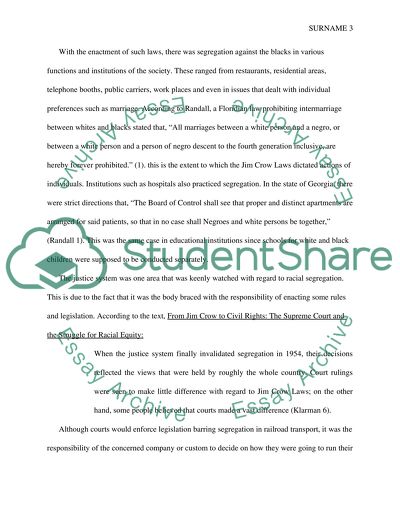Cite this document
(“Jim Crow Laws Research Paper Example | Topics and Well Written Essays - 1750 words”, n.d.)
Retrieved from https://studentshare.org/history/1447653-jim-crow-laws
Retrieved from https://studentshare.org/history/1447653-jim-crow-laws
(Jim Crow Laws Research Paper Example | Topics and Well Written Essays - 1750 Words)
https://studentshare.org/history/1447653-jim-crow-laws.
https://studentshare.org/history/1447653-jim-crow-laws.
“Jim Crow Laws Research Paper Example | Topics and Well Written Essays - 1750 Words”, n.d. https://studentshare.org/history/1447653-jim-crow-laws.


